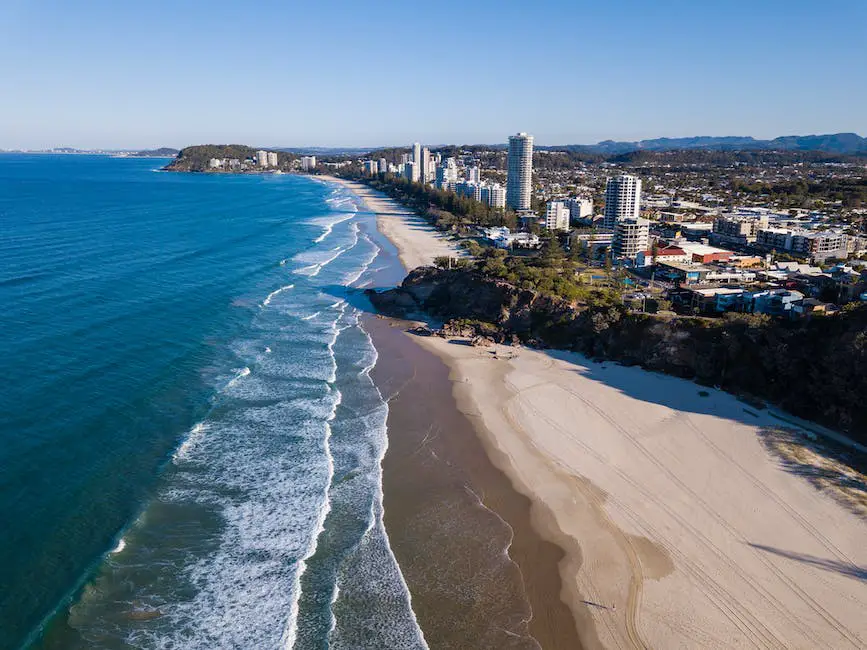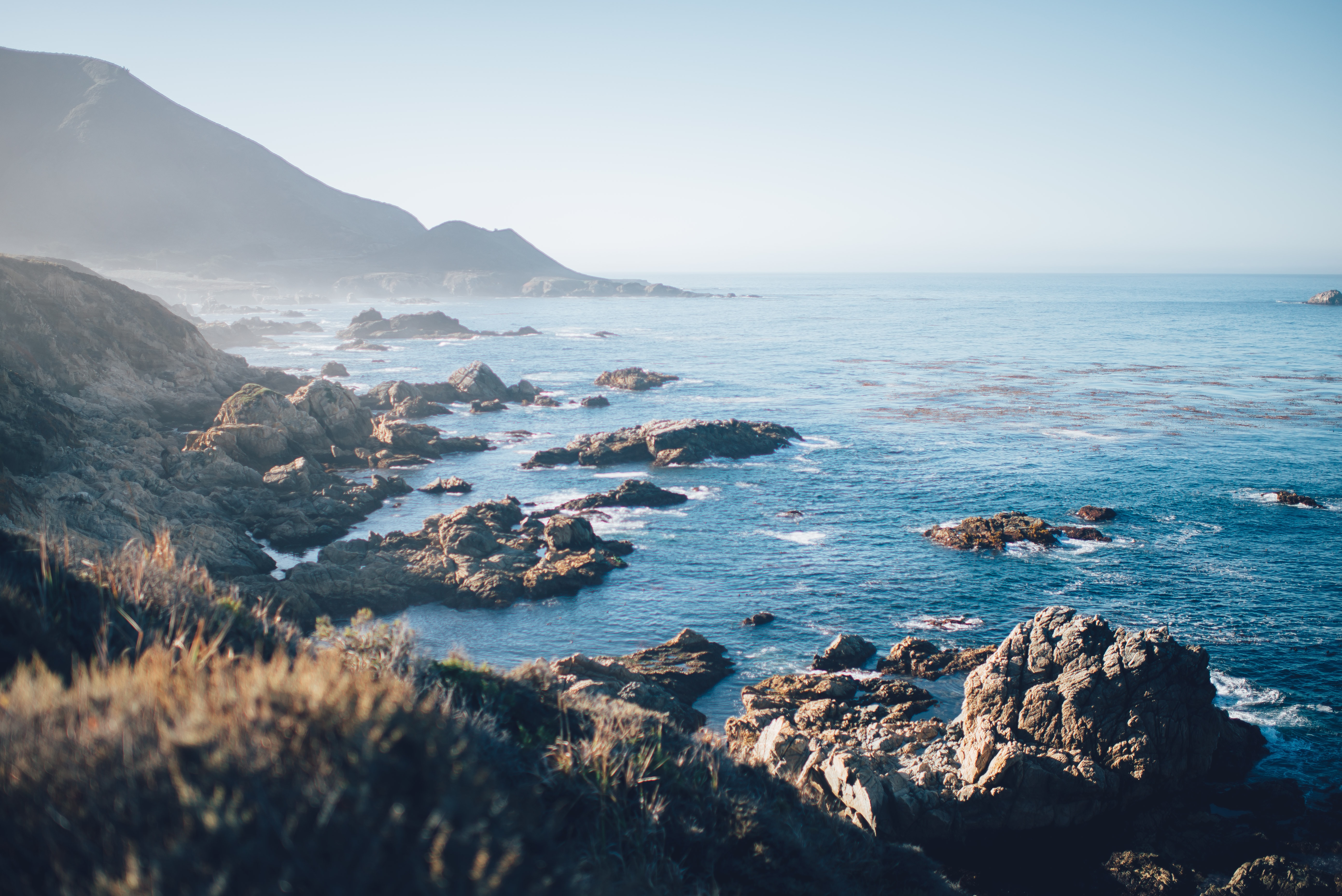La Jolla, a jewel on the Southern California coastline, boasts a unique and diverse marine ecosystem, which is greatly influenced by its water temperature. For enthusiasts and hobbyists, understanding the intricacies of La Jolla’s water temperature is essential to appreciate the thriving marine environment and the forces shaping it. In this essay, we’ll delve into various factors that influence the water temperature in La Jolla, including oceanography concepts, regional weather patterns, and the impacts of climate change. By gaining a comprehensive understanding of these factors, we can better appreciate the dynamic nature of La Jolla’s waters and their effect on the abundant marine life that resides there.
Oceanography Basics
Ocean currents and oceanographic phenomena influence La Jolla’s water temperature. The California Current is a southward-flowing cold ocean current that moves along the western coast of the United States, bringing colder waters from northern latitudes that mix with the warmer shoreline waters. This mixing can cause variations in temperature and transport nutrients and marine life. Upwelling also affects water temperatures, occurring when winds push surface waters away from the shoreline and colder, nutrient-rich waters from deeper levels rise to replace them. Coastal processes and the El Niño-Southern Oscillation phenomenon also impact La Jolla’s water temperature.
La Jolla’s unique underwater landscapes, such as its canyons and cliffs, greatly affect how water circulates and dictate temperature distribution near the shore. Other contributing factors include local shoreline features, wind patterns, and tidal activity. Understanding these elements is crucial in predicting water temperatures in coastal regions like La Jolla. By closely monitoring the various aspects of oceanography, enthusiasts, researchers, and residents can gain better insight into La Jolla’s water conditions and, in turn, deepen their appreciation for this beautiful ocean environment.

Regional Weather Patterns
Located in Southern California, La Jolla’s climate is characteristic of the greater Mediterranean region, known for its warm, dry summers and mild, wet winters. The Pacific High-pressure system, together with the coastal low-pressure systems that develop along the coast, heavily influence this climate zone. As the position of the Pacific High-pressure system changes with the seasons, it steers the prevailing winds and ocean currents that significantly impact La Jolla’s water temperatures, creating diverse marine conditions throughout the year.
During the summer months, the Pacific High-pressure system is located off the coast of California. This position generates northwesterly winds, driving the California Current southward along the coast, leading to upwelling events. Upwelling is a process where cold, deep waters rich in nutrients rise to the surface, replacing the warmer, sunlit waters. As a result of these events, the water temperature around La Jolla tends to be cooler during the summer months, averaging around 64 to 66°F (18 to 19°C).
Conversely, in the winter months, the Pacific High-pressure system shifts further west and south which allows coastal low-pressure systems to move in, bringing more precipitation to the region. During this period, southern California experiences its wettest months; however, with the upwelling water being less significant, surface water temperatures are only slightly cooler than in the summer, ranging between 58 to 60°F (14 to 16°C).
In addition to seasonal variations, occasional climate anomalies such as El Niño can also influence La Jolla’s water temperatures. El Niño is a phase of the El Niño-Southern Oscillation (ENSO) characterized by warmer-than-average ocean temperatures in the central and eastern tropical Pacific. During an El Niño event, warmer waters and weaker upwelling result in higher water temperatures along the Southern California coast, including La Jolla. This can lead to changes in marine life distribution and water quality, as well as increased coastal erosion and storm impacts.
Understanding the influences of both the Pacific High-pressure system and coastal low-pressure systems on La Jolla’s water temperatures is crucial for marine life management, water quality monitoring, and local ocean-based recreational activities like surfing and diving. As an enthusiast or hobbyist, being aware of seasonal variations and climate events like El Niño helps anticipate water conditions and adapt activities accordingly, leading to a safer and more enjoyable experience in La Jolla’s coastal waters.

La Jolla’s Coastal Ecosystem
Located in San Diego, California, La Jolla is a coastal neighborhood known for its unique and diverse marine ecosystem. By keeping informed of the water temperature and closely monitoring fluctuations, enthusiasts can make the most of their visits to this beautiful location, maximizing their enjoyment and understanding of the thriving marine life and world-class recreational activities it offers.
The La Jolla Submarine Canyon, spanning an estimated area of over 8000 hectares, is a prominent marine feature in the region. The canyon is a result of a combination of tectonic and erosional processes, leading to the formation of steep cliffs, deep waters, and strong underwater currents. Because of this unique formation, the canyon supports a wide range of marine species, including deep-sea fish and a vast array of marine invertebrates, with water temperatures playing a critical role in their survival and distribution.
Kelp forests are another outstanding element of La Jolla’s coastal ecosystem. These underwater forests of giant kelp (Macrocystis pyrifera) provide an important habitat for a multitude of marine organisms, from small invertebrates to larger marine mammals. La Jolla water temperature has a direct impact on the growth and distribution of these kelp forests. The ideal water temperature for their flourishment is between 50 to 60 degrees Fahrenheit (10 to 16 degrees Celsius). Within these temperature ranges, giant kelp can grow up to 2 feet (61 cm) per day, offering ideal living conditions for a multitude of marine species and contributing significantly to the region’s biodiversity.
Tide pools are another fascinating aspect of La Jolla’s coastal ecosystem. Formed in rocky intertidal zones, these shallow pools of seawater are home to a variety of marine life, including sea anemones, mussels, sea stars, and numerous types of algae. As tides recede, they leave behind these pools, where water temperature fluctuations can be much more pronounced compared to the open ocean. The organisms residing within these tide pools have adapted to these extreme fluctuations in temperature, developing remarkable resilience to changing environmental conditions.
La Jolla water temperature is not only important for the distribution and abundance of marine species in the area but also has implications for coastal ecosystems’ overall health. Changes in water temperature can potentially lead to alterations in ocean currents, upwelling patterns, and nutrient availability, thus impacting the entire food chain. For instance, warmer water temperatures have been associated with a decrease in zooplankton abundance, which forms the basis of the marine food web. In turn, this can have cascading effects on the marine species that rely on the availability of these microscopic organisms for their survival.
One of the most critical factors to consider for water-based activities in La Jolla, California, is the water temperature. By studying historical and current data from databases, buoys, and weather stations, enthusiasts and hobbyists can acquire significant insights into the dynamics of water temperature in the area. Tracking La Jolla water temperature trends and fluctuations over time will help in understanding its suitability for marine activities and its effect on local marine ecosystems.

Historical and Current Water Temperature Data
Furthermore, water temperatures in La Jolla can also significantly impact the area’s renowned sea lion and harbor seal populations. These marine mammals depend on specific temperature ranges to ensure their physiological wellbeing and reproductive success. As water temperatures continue to change under the influence of global climate change, understanding and monitoring these fluctuations becomes increasingly important to ensure the conservation of the unique marine life and ecosystems that call La Jolla their home.
La Jolla, located within the Southern California Bight, experiences certain patterns in water temperature due to seasonal changes and oceanographic processes. On average, La Jolla water temperature ranges from around 57°F (14°C) in the winter months to about 68°F (20°C) during summer. Interestingly, the warmest water temperatures tend to occur in September, once the summer has peaked, with historical records indicating highs of up to 72°F (22°C). This delayed warming suggests that the water may retain heat more effectively than the air or surrounding environment during this period.
Oceanographic processes such as upwelling, coastal currents, and the influence of the California current also play a significant role in shaping water temperatures in La Jolla. Upwelling is the process in which colder, nutrient-rich water from deep levels rises to the surface. This causes a drop in surface water temperature, which can be particularly pronounced during spring and summer months. The California current, a cold water current that flows southwards, further contributes to the relatively cooler water temperatures experienced in La Jolla as compared to other similar coastal locations in southern California.
One essential resource for obtaining historical La Jolla water temperature data is the Scripps Institution of Oceanography, which has been gathering oceanographic data since the early 1900s. They maintain extensive datasets featuring both inshore (Pier) and offshore (Scripps Offshore Moored Buoy) water temperatures for the area. For current water temperature data, the National Oceanographic and Atmospheric Administration (NOAA) provides real-time measurements from a coastal buoy positioned near La Jolla.
Understanding the water temperature trends and fluctuations in La Jolla is essential for various water activities, including surfing, swimming, and diving. Moreover, these temperature trends can impact the local marine life, coastal ecosystems, and fishing opportunities. As a result, gaining a comprehensive knowledge of the historical and current La Jolla water temperature data can substantially improve the recreational use, conservation, and sustainable enjoyment of this stunning coastal area.

Factors Affecting Water Temperature
The water temperature in La Jolla is influenced by several factors, with sea surface temperatures (SSTs) being one of the primary contributors. SSTs affect the water temperature near coastal regions as the water warms or cools in response to the area’s atmospheric conditions. In La Jolla, the warm California current blends with the cooler southern California coastal waters. The interaction between these currents directly impacts the local water temperature, creating the unique environment for enthusiasts and hobbyists to carefully monitor and enjoy.
Another key factor affecting the water temperature in La Jolla is solar radiation. As one of the key components of the global climate system, solar radiation heats the ocean’s surface, leading to changes in water temperature. La Jolla is known for its sunny weather, and during the summer months, the increased sunshine contributes to water temperature increases near the coastal areas. On the other hand, during winter and cloudy days, reduced solar radiation causes the water temperature to drop.
Wind patterns also influence the water temperature in La Jolla. Typically, winds from the northwest cause upwelling along the coast, which involves the movement of colder, nutrient-rich waters to the surface. This process has a cooling effect on the water temperature near the beaches of La Jolla. Conversely, when winds shift to come from the south, they bring warmer water to the area, resulting in an increase in local water temperature.
Water depth plays an essential role in determining La Jolla’s water temperature, as the temperature usually decreases with increasing depth. This is due to the ocean’s stratification, where different layers of water have different temperatures. In shallow areas near the coast, like La Jolla, the sun’s energy heats the upper layer of water, while the deeper layers remain cooler. As a result, water temperature near La Jolla’s beach areas can be warmer than the surrounding waters further away from the coast.
Lastly, freshwater input from local rivers and creeks can influence La Jolla’s water temperature. When there is significant rainfall or snow-melt, the influx of freshwater from the surrounding land into the ocean can lead to fluctuations in the coastal water temperature. Although freshwater input may be a smaller factor in La Jolla compared to other influences mentioned, it still holds some significance in terms of impacting La Jolla’s water temperature.

Photo by p_kuzovkova on Unsplash
Impacts of Climate Change on La Jolla Water Temperatures
Moving on to the effects of climate change on La Jolla water temperatures, one significant impact is the rise in sea levels. As global temperatures steadily increase, polar ice caps and glaciers are melting, contributing to the rise of sea levels worldwide. La Jolla’s coastline has already seen a measurable increase in tide levels over the last few decades, which could lead to inundation, erosion, and habitat loss along the coast. This would directly affect the La Jolla Underwater Park and Ecological Reserve, home to a wide range of marine species, kelp forests, and coral reefs.
Another prominent factor contributing to changing water temperatures in La Jolla is ocean acidification. This is primarily driven by increased levels of carbon dioxide being absorbed by the ocean, a direct consequence of the burning of fossil fuels and deforestation. As ocean acidity rises, the habitats and ecosystems of La Jolla’s marine life may be significantly altered and disrupted. Many organisms, especially those that rely on calcification, such as coral reefs and shellfish, may struggle to adapt to this change. Ocean acidification could also cause alterations in the ocean’s food chain, potentially resulting in major damages to marine ecosystems and biodiversity in La Jolla.
El Niño events, which are characterized by warming sea surface temperatures in the eastern Pacific, have become more frequent and intense due to climate change. In La Jolla, these events can cause significant fluctuations in water temperature resulting in devastating impacts on marine life and ecosystems. El Niño events often lead to mass coral bleaching, which occurs when conditions cause corals to expel the microscopic algae that live in their tissues and provide them with nutrients. Severe bleaching can lead to coral death and has the potential to drastically alter the biodiversity and ecology of the La Jolla coastal region.
Besides impacting ecosystems and marine life, the effects of climate change on La Jolla’s water temperatures might also have repercussions on the local economy, which depends greatly on recreation and tourism-related activities. Coastal erosion, loss of marine habitats, and the decline of marine species would have a negative impact on the attractiveness of La Jolla as a tourist destination. This could lead to a decrease in revenue for local businesses and potentially affect the overall quality of life for La Jolla residents.
Understanding the potential impacts of climate change on La Jolla’s water temperatures is crucial for taking appropriate conservation and adaptation measures. Coastal management and regional adaptation strategies, such as beach nourishment, habitat restoration, and sustainable development, could help mitigate the negative effects of rising sea levels, ocean acidification, and increased El Niño events on La Jolla’s ecosystems and marine life. These efforts could, in turn, protect the region’s biodiversity, tourism industry, and the long-term well-being of its residents.

As we’ve explored the myriad factors that influence La Jolla’s water temperature, it’s evident that the area’s marine environment is both unique and complex. By researching topics ranging from oceanography basics to the impacts of climate change, we’ve developed a deeper understanding of this crucial aspect of La Jolla’s coastal ecosystem. This knowledge not only enriches our appreciation for the myriad marine habitats and species that thrive in this region but also highlights the importance of preserving and protecting this delicate environment from human-induced stressors for future generations to enjoy and explore.
